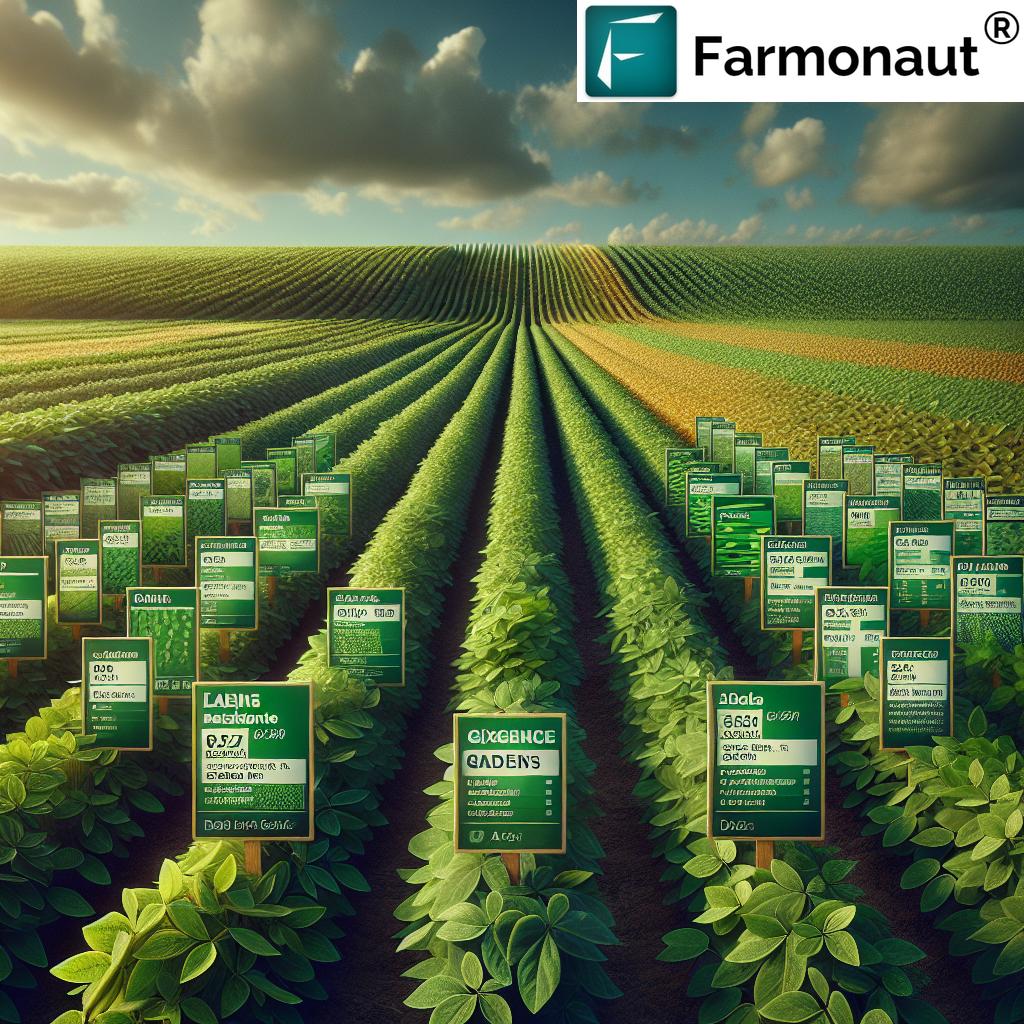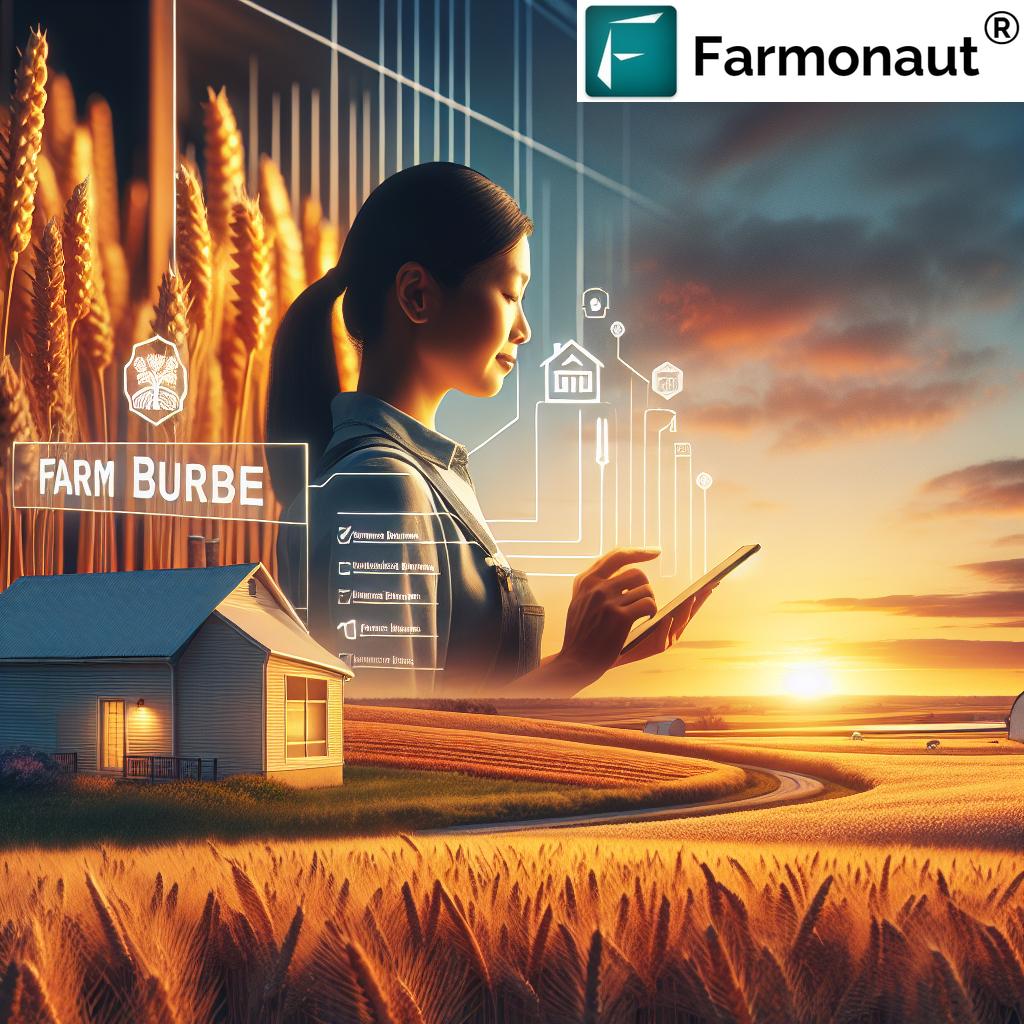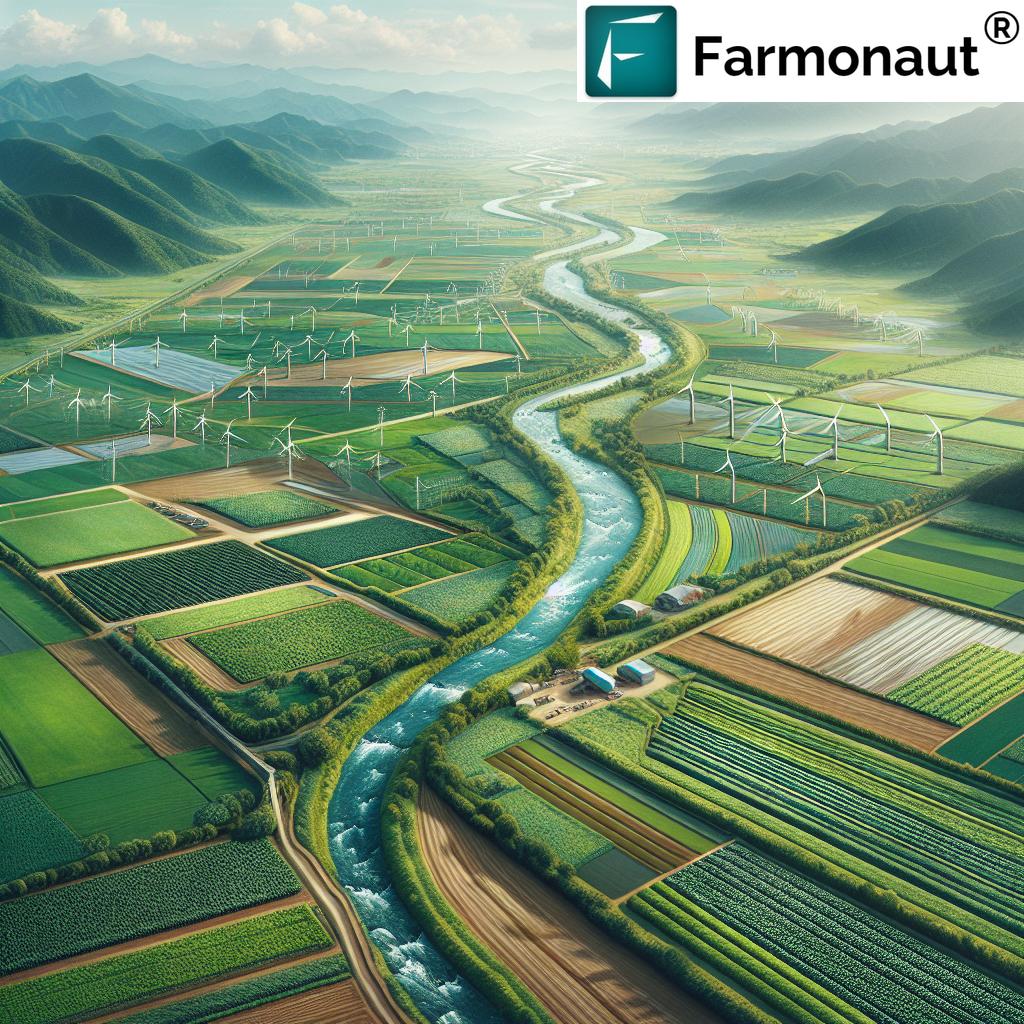Drought Impact on Agriculture: Texas Crop Price Effects in 2025
Introduction: Understanding Drought Impact on Texas Agriculture
Texas stands at the epicenter of American agriculture, contributing an immense volume of crop and livestock products to the US and global food supply. However, in 2025, the state continues to face drought–a severe, recurring environmental threat. The impact of drought on agriculture is more than a weather headline: it threatens crop yields, raises prices, affects the economy, and challenges the livelihoods of thousands of farmers. As drought conditions prevail across key regions like the Texas High Plains and the Rio Grande Valley, our focus must shift to understanding the full implications—from the roots of the stress-causing soil moisture decline, to the chain reaction in commodity prices and economic ripple effects throughout rural communities and beyond.
This blog post explores the impacts of drought on agriculture in Texas for 2025 and beyond: how yields drop, prices rise, and what adaptive strategies can help sustain both the economy and the environment.
“Texas droughts in 2025 reduced average crop yields by up to 35%, sharply increasing wheat and corn prices statewide.”
The Historic Role and Expansion of Texas Agriculture: From 19th Century to 2025
How did the expansion of agriculture affect the economy of Texas? To truly understand drought impact on agriculture today, we must reflect on the historical expansion of the sector across Texas. Since the 19th century, the state has developed a robust farming economy built on cotton, corn, sorghum, and an evolving array of crops. This expansion of agriculture fueled not only economic growth but also rural population increases, physical infrastructure such as railroads and irrigation canals, and exports that established Texas as an agricultural powerhouse.
Yet, these very developments also led to more intensive use of land and water—making the state arguably one of the most drought-vulnerable regions in the US. Farming expansion into semi-arid regions like the Texas High Plains, while historically critical for the economy of Texas, increased dependency on irrigation and soil moisture for staple and high-value crops. Today, in 2025, recurring drought continues to test the sustainability of this growth trajectory.
The Environmental Nature of Drought and Its Threats to Agriculture
Drought stands out as one of the most severe natural threats to agriculture, particularly in a state like Texas where so much of the economy still relies on farming. But what makes these environmental stresses so impactful?
- Moisture Decreases in Soil: When rainfall decreases drastically over several consecutive years—as seen in 2025— the availability of water for crops plummets. Soil fails to retain needed moisture, increasing water stress on crops.
- Plants Struggle to Grow: Insufficient moisture means crops from cotton to corn and sorghum cannot mature or produce outputs at expected rates, leading to lower yields and poor harvests.
- Diminished Production: The reduced yields from water scarcity translates to severely diminished production across key Texas agricultural regions—with the Rio Grande Valley and High Plains especially hard-hit in 2025.
- Persistent Environmental Stress: As climate variability continues, drought is projected to remain a recurring and essential challenge for Texas agriculture.
Drought Impact on Agriculture: How Drought Affects Crop Yields and Production
Central to the drought impact on agriculture in 2025 is the direct effect on crop yields. In Texas, rainfall patterns have been increasingly unpredictable, with drought continuing to affect both irrigated and rain-fed farms in key regions, including:
- The High Plains
- The Blackland Prairies
- The Rio Grande Valley
Here’s how impacts of drought on agriculture unfold:
- Soil Moisture Decreases: Drought leads to a drastic reduction in soil moisture, worsening water stress on crops.
- Reduced Plant Growth & Maturity: Plants struggle to grow and mature, producing fewer and smaller outputs (e.g., cotton bolls, corn ears).
- Diminished Harvests: Consecutive years of drought-soaked soils reduce annual yields of staple crops such as cotton, corn, wheat, and sorghum—often by 30% or more in the worst-hit areas.
- Secrets of Diversity: Drought also discourages monoculture, nudging farmers towards a more diverse, risk-buffering crop mix.
If Texas Experiences a Drought Affecting Crop Yields, How Would This Impact the Price of Texas-Grown Agricultural Products?
The link between drought impact on agriculture and market dynamics is straightforward but profound.
- When crop yields drop, supply falls while demand remains essentially stable (or can even grow, as global food security concerns heighten).
- This disequilibrium inevitably leads to higher prices for Texas-grown crops such as cotton, corn, wheat, and sorghum.
- Commodity inflation also cascades down the chain: Local markets see higher expenses for raw commodity buyers, food processors, and retailers. Ultimately, consumers across Texas and far beyond encounter increased food costs.
- Harvest shortfalls exert economic pressure on farmers, who must contend not only with poor harvests but also with rising input costs such as water for irrigation, energy, and even insurance premiums. Many may shift their crop mix in response, further affecting markets.
Example: In 2025, estimates suggest wheat and corn prices in Texas have increased by up to 40%, driven almost entirely by supply-side contraction due to drought-induced yield losses.
Broader Economic Effects of Drought on the Texas Economy
The impacts of drought on agriculture are not contained to the field—they ripple across the Texas economy:
- Rural communities feel the hit first. Reduced farm income leads farmers to tighten household and business spending. Local services (equipment repair, crop input supply, transportation, and even hospitality) see lower revenues, leading to a downward spiral in rural economies.
- Commodity-dependent industries (from food processing to textiles) are affected by higher input costs, leading to price adjustments or even layoffs.
- The state government faces new fiscal pressures, forced to invest more in drought mitigation, water infrastructure, and relief efforts for hard-hit communities.
- Agricultural employment contracts. Poor harvests and lower cash flow may force farmers to reduce seasonal labor or transition to less labor-intensive crops.
These widespread effects underscore the need for effective drought risk management and investment in both technological and policy-driven solutions.
Farmonaut Satellite & AI Solutions: Enabling Adaptive Strategies in Texan Agriculture
Resilience in the face of drought requires actionable intelligence. Farmonaut empowers farmers, agri-businesses, and policymakers to adapt proactively with real-time satellite data, AI-driven advisory, and advanced resource management technology.
- Satellite-Based Monitoring: With high-resolution satellite imagery, Farmonaut tracks vegetation health (NDVI), soil moisture, and field conditions—all essentials for optimizing irrigation and predicting yield under drought stress.
- Jeevn AI Advisory: This proprietary system delivers customized crop management tips, precision weather forecasts, and alerts on environmental changes. It helps users align irrigation, nutrient application, and harvesting with real-time conditions—avoiding wasted water and boosting output in dry years.
- Blockchain-Based Traceability: Keeping supply chains secure and authentic, Farmonaut’s blockchain system helps producers and buyers trace products from field to market. Learn how this prevents fraud and ensures transparency for Texas crops under stress.
- Fleet and Resource Management: Farmonaut enables efficient deployment of machinery/equipment to further optimize irrigation and harvesting operations. Find out how fleet management supports timely actions during drought.
- Carbon Footprinting & Environmental Impact Monitoring: With tools to measure carbon and input use, Farmonaut helps Texas farmers meet new sustainability demands. Explore how carbon tracking underpins resilient, climate-smart farming.
Farmonaut’s web and mobile apps put this technology in your pocket, enabling users at all scales to manage drought risk efficiently.



For developers and ag-enterprises seeking to integrate satellite insights into existing systems, Farmonaut offers a powerful API and Developer Docs.
Estimated 2025 Texas Crop Yield and Price Changes Due to Drought
| Crop Type | Usual Yield (tons/acre) |
Estimated Yield Under Drought (tons/acre) |
Usual Market Price (USD/ton) |
Estimated Price Under Drought (USD/ton) |
Adaptive Strategies |
|---|---|---|---|---|---|
| Cotton | 0.9 | 0.56 | $1,800 | $2,350 | Drought-resistant varieties, Advanced drip irrigation, Early sowing & mulch |
| Corn | 4.0 | 2.5 | $190 | $265 | Soil moisture sensors, Hybrid seeds, Staggered planting |
| Wheat | 1.25 | 0.8 | $210 | $320 | Reduced tillage, Fallow period management, Efficient irrigation |
| Sorghum | 3.0 | 1.95 | $160 | $225 | Drought-adapted cultivars, Soil water conservation, Crop rotation |
Note: Values are estimates for 2025 based on observed trends during recent droughts in Texas. Actual yields and prices may vary due to regional, seasonal, and management factors.
Adaptive & Mitigative Strategies: Building Resilient Agriculture in Texas
Why Is Adaptation Essential in a Drought-Prone State?
The impacts of drought on agriculture are harsh, but Texas farmers and agri-businesses are far from powerless. Adopting adaptive and mitigative strategies is not just about surviving a bad year—it’s about ensuring long-term agricultural resilience, economic stability, and even environmental sustainability.
Key Adaptive Strategies in 2025:
- Drought-Resistant Crop Varieties: Investing in cultivars genetically bred to withstand water stress or mature quickly is helping farmers maintain output even in dry years.
- Irrigation Optimization: From drip irrigation to precision application guided by soil moisture sensors, smarter water use maximizes yields and protects Texas’ limited aquifers.
- Sustainable Soil Management: Practices like reduced tillage, mulching, cover crops, and organic amendments boost soil moisture retention and build long-term fertility.
- Crop Diversification: Mixing drought-tolerant crops or double-cropping spreads risk and buffers farmers against total losses.
- Early Warning and Data-Driven Decisions: Leveraging real-time monitoring, weather forecasts, and AI advisories allows for timely defensive actions. Farmonaut offers such capabilities through its single platform—empowering users to adapt quickly.
- Financial Instruments: New insurance solutions and satellite-verified crop loan access ensure farmers can recover and replant in the aftermath of drought.
- Improved Resource Management: Fleet management and automation reduce input waste and ensure every operational dollar delivers value. See how Farmonaut’s Agro Admin platform empowers large-scale managers.
“Adaptive farming practices in Texas helped farmers save 25% more water during drought periods, boosting economic and environmental resilience.”
How Technology, Satellite, and AI Empower Sustainable Texan Farms
The Role of Digital Transformation in Drought Resilience
Modern agriculture stands at a crossroads, where technology and digital platforms can be the difference between loss and resilience. Satellite data paired with AI is particularly essential for climate-affected regions like Texas. We (Farmonaut) are dedicated to making these technologies affordable and actionable for farmers, enterprises, and governments alike.
- Precision Agriculture via Satellite Insights: Gone are the days when farmers had to rely solely on intuition to estimate field conditions. Today, satellite-based analytics (NDVI, NDWI) enable precise mapping of plant stress, moisture shortages, and yield potential—even in the vast fields of the High Plains or the fragmentation of the Rio Grande Valley.
- Real-Time Advisory Systems: AI-driven advisories, such as those powered by Farmonaut Jeevn AI, guide optimal irrigation, when to plant, and how to respond to evolving weather—turning data into measurable outcomes.
- Environmental Monitoring: Tracking water usage, emissions, and ecological impacts gives farms the data edge needed to both meet regulatory standards and contribute to broader sustainability targets.
- Supply Chain Transparency: Blockchain-based traceability (learn more here) helps verify crop origins, boost consumer trust, and secure fair pricing for Texans.
FAQ: Drought Impact on Agriculture, Crop Prices, and Strategies in Texas 2025
What are the main causes of drought in Texas?
Drought in Texas is primarily caused by consecutive years of below-average rainfall, high temperatures, and shifting climate patterns. Watershed depletion, over-extraction for irrigation, and changes in the jet stream also play a role. These climatic shifts increase the frequency and severity of drought conditions.
How does drought directly impact crop production?
Drought reduces soil moisture, limits water availability for crops, and leads to plants struggling to grow or mature. The outcome is lower yields, smaller harvests, and often inferior product quality, all of which affect farm income and local economies.
If Texas experiences a drought affecting crop yields, how would this impact the price of Texas-grown agricultural products?
When supply drops and demand remains stable, prices rise. In 2025, the sharp drop in yields of crops such as wheat and corn has driven up commodity prices, impacting everyone from food processors to end consumers. This price inflation cascades throughout the economy.
What are the best adaptive strategies for Texas farmers facing drought?
Leading strategies include drought-resistant varieties, precision irrigation, soil health management, crop diversification, and technology-enabled monitoring. Financial instruments like insurance, and access to satellite-driven intelligence (such as Farmonaut solutions), strengthen resilience further.
How did the expansion of agriculture affect the economy of Texas?
Expansion allowed massive growth in trade, rural job creation, and infrastructure development. However, it also increased vulnerability to drought conditions in semi-arid regions, creating contemporary sustainability challenges for both economic and environmental outcomes.
Are satellite and AI solutions viable for small and medium farmers?
Yes. Today’s platforms, like Farmonaut’s, make advanced analytics affordable and accessible via web or mobile apps, allowing even smallholders to optimize water, monitor crop health, and make data-driven decisions in real-time.
Conclusion: Grasping the Full Implications for 2025 and Beyond
The impact of drought on agriculture in Texas during 2025 reveals a complex chain of environmental, economic, and social stresses. Reduced rainfall and extreme weather diminish soil moisture, leading to lower crop yields and increased market prices for essential agricultural commodities. The effects ripple across local industries, rural economies, consumers, and even global food security.
But Texas’s history—built on adaptation, innovation, and bold agricultural expansion—also points the way forward. By integrating drought-mitigating technologies, sustainable land management, and advanced digital tools (including the real-time capabilities we provide at Farmonaut), farmers and agri-businesses can buffer the risks of drought and sustain productivity for the next generation. Continuous investment in infrastructure, policy frameworks, and climate-smart solutions remains essential to secure the future of Texas agriculture.
Farmonaut Subscriptions
Ready to embrace satellite-powered insights for resilient, efficient agriculture? Explore Farmonaut’s flexible subscription options for farmers, agribusinesses, and agencies of every scale below.









